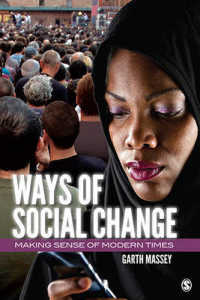- ホーム
- > 洋書
- > 英文書
- > History / World
Full Description
Central Asia has been perceived as a landscape of connections, of Silk Roads; an endless plain across which waves of conquerors swiftly rode on horseback. In reality the region is highly fragmented and difficult to traverse, and overcoming these obstacles led to routes becoming associated with epic travel and high-value trade. Put simply, the inhabitants of these lands became experts in the art of travelling the margins.
This volume seeks to unravel some of the myths of long-distance roads in Central Asia, using a desert case-study to put forward a new hypothesis for how medieval landscapes were controlled and manipulated.
Contents
Contents
Acknowledgements
List of Figures and Tables
Notes on Transliteration, Transcription, and Dates in the Text
1 Introduction
1 Questions for Understanding Movement
2 The Layout of this Volume
3 Travel, Routes, Power, and Boundaries
2 Traditions of Travel and the Origins of Road Networks in the Eastern Islamic World
1 Pre-Islamic Travel and Trade in Central Asia
2 Approaching Late Antiquity
3 The Arrival of Islam in Khurasan and Transoxania, and the Establishment of Routes across the Karakum Desert
4 Beyond the Medieval Period
3 Black Sands: the Landscape of the Karakum Past and Present
1 Physical Geography
2 Climate
3 Flora
4 Water
5 Surveying the Karakum Landscape
6 Further Analysis
4 Defining the Architecture of Desert Travel
1 Large Architectural Remains: 'Caravanserai', 'Khān', or 'Ribāṭ'?
2 Smaller Architectural Sites: Towers to Sardobas
3 The Built Remains as a Corpus
5 Moving Material Culture
1 Ceramic Forms
2 Unglazed Ceramic Wares
3 Glazed Ceramics
4 Ceramics as a Chronological Indicator
5 Ceramics as a Functional Indicator
6 Ceramic Distribution and the Origins of Wares
7 Stone
8 Semi-precious Stones
9 Glass
10 Metal
6 Modelling Landscapes of Movement
1 A GIS Approach to Pathways
2 Friction and Cost Surfaces
3 The Lure of Water - Weighted Analyses
4 Visible Tracks - Remote Sensing and Digitization
5 Historical Cartographic Comparisons
6 Material Comparisons - How Does the Survey Support the Geographical Modelling and Cartographic Evidence?
7 Paths, Chronology, and Movement in the Desert
7 Rethinking Routes - from Roads of Silk to the Threads of Networks
1 Securing Travellers
2 Sustaining Travellers
3 Controlling Travellers: Power, Ideology, and Desert Travel
4 A Model of Travel Peculiar to Deserts? Particular to the Islamic World?
5 Conclusions
Glossary
Bibliography
Index








